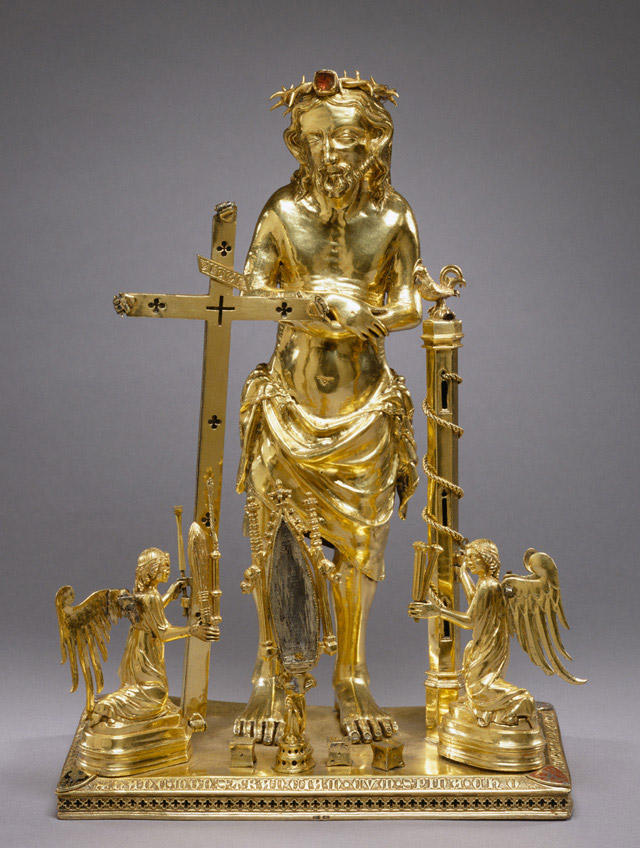Reliquary with the Man of Sorrows
The Walters Art Museum, Baltimore

 Select the image to zoom
Select the image to zoom
Contact relics of Christ, such as pieces of his shroud or the wood of the True Cross, were among the most precious of medieval possessions. Many relics in this important category, including the Crown of Thorns, were brought to Paris from Constantinople by Louis IX in the thirteenth century. Thorns from the Crown began to circulate in Europe thereafter as important gifts. According to an inscription on the base, this reliquary was commissioned by John Volek (1334–51), the bishop of Olmütz in Moravia to house the Holy Thorn. Probably he received the relic as part of the estate of his half-sister, Elisabeth Premysl, mother of Emperor Charles IV. The coats of arms of Moravia, Bohemia, and Olmütz are on the base, indicating that the reliquary was probably intended as a gift to Charles IV. As Charles reigned over both Bohemia and Moravia only from 1347 to 1349, the piece must date to this time.
Charles IV was an avid collector of relics, and he owned two more thorns from Christ's Crown gifted to him by Charles, the dauphin of France. The image of the Man of Sorrows is a distillation of the events of Christ's Passion. Christ contemplates with sorrow the instruments of his suffering: the Cross and hammer, whips, nails, the column of the Flagellation, and the dice thrown by the soldiers for his garments. The gabled container held by an angel once housed the thorn, while the hinged cross and column probably held pieces of the relic of the True Cross and the column against which Christ was whipped. The theatrical staging of the composition contributes to the devotional aspect of this reliquary, which was intended to help the viewer visualize and experience the Passion of Christ. The Walters' Man of Sorrows is one of the few surviving pieces that attest to the sophistication of Bohemian goldsmiths working for the emperor.




